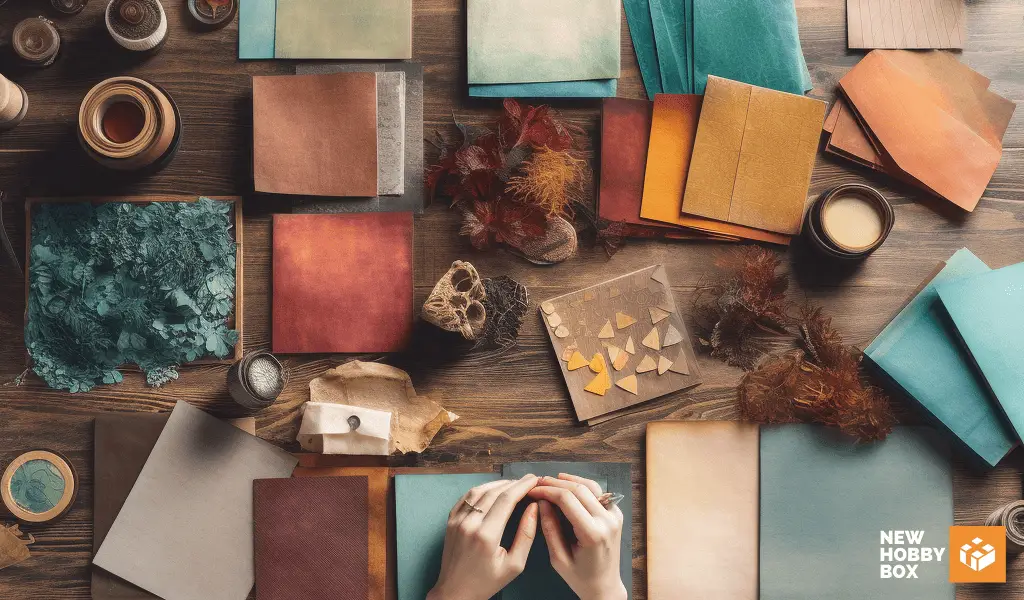
So, you’re all set to dive into the wonderful world of bookbinding, your heart brimming with enthusiasm. But wait, there’s a hiccup – the dizzying array of paper types out there. Which one fits the bill for your bookbinding project? It’s not just a random pick; the right paper makes all the difference. In general, there’s a simple answer to this:
Acid-free and uncoated paper is the best type of paper for bookbinding. This choice provides longevity and does not yellow over time. Given its durable nature, this paper type stands up to the rigors of binding and frequent handling, making it ideal for creating robust, long-lasting books.
If you can’t tell by the info above, choosing the perfect paper goes beyond its visual appeal; it’s about creating a lasting bond with your book. Unfortunately, with a million types of paper to pick from, it can become overwhelming… that’s why we wrote this short, but comprehensive guide.
This is your roadmap to understanding the wide, intriguing universe of bookbinding papers. We’ll dive into various paper types, their unique qualities, and their role in bookbinding. Let’s start turning those pages!
CHOOSING THE BEST PAPER FOR BOOKBINDING
Choosing the right paper for bookbinding is essential as it directly influences the final product’s quality, durability, and aesthetics.
It’s not merely a matter of picking a sheet but a critical step that shapes the entirety of your handcrafted book.
Different factors come into play in this process, including the book’s intended medium and use, paper weight, thickness, finish, texture, size, format, and grain direction.
Understanding these aspects helps in creating books that are not only visually appealing but also durable and functional. Let’s look at each of these elements more closely.
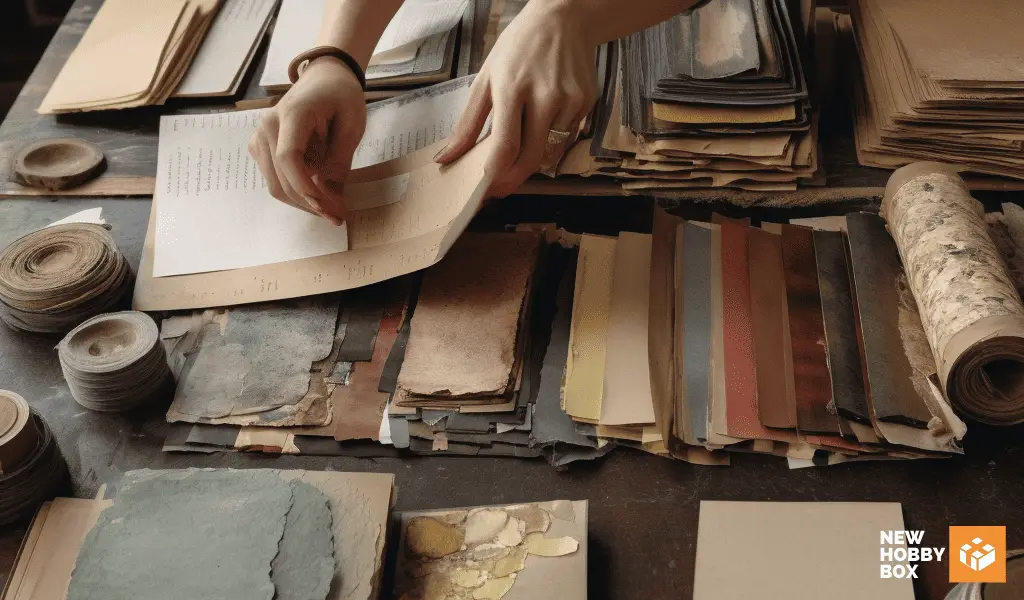
How to Evaluate Paper for Handmade Books
As you’d imagine, there’s a lot more detail involved in each decision. If you’re hunting for more info on making the right decision, then keep reading. We’ve got everything you need to make the right paper purchase.
| Medium | Intended Use |
|---|---|
| Ink | Ideal for writing and illustrations |
| Paint | Suitable for watercolors and mixed media |
| Pencil | Perfect for sketching and detailed drawings |
Medium and Intended Use
The book’s purpose, whether for writing, drawing, or printing, necessitates the selection of specific paper types. Plan ahead on how you intend to use it.
Will it get crammed into your backpack? If so, you need a paper that’s more durable.
Do you intend to write in it, paint in it, or sketch in it? This will influence how you want the paper to grab any form of making a mark (ink, paint, or pencil).
| Weight Category | Thickness Range |
|---|---|
| Lightweight | Thin |
| Medium | Moderate |
| Heavyweight | Thick |
Weight and Thickness
The weight and thickness of the paper affects the overall feel and durability of the book. Plus its ability to handle different types of mediums without bleeding or smudging.
The weight of the paper refers to its heaviness, while the thickness refers to its density or bulkiness.
Paper weights can be classified into three main categories: lightweight, medium-weight, and heavyweight.
- Lightweight papers are thin and flexible, making them suitable for portable books or ones with many pages.
- Medium-weight papers offer a balance between flexibility and durability, making them suitable for a variety of book types.
- Heavyweight papers are thick and sturdy, providing extra durability, particularly for books with hard covers or a high number of pages.
It’s important to note that the thickness range may vary based on personal preferences and specific requirements of the bookbinding project.
One interesting fact is that different paper weights can impact how well ink is absorbed by the paper fibers. Heavier weight papers tend to absorb less ink compared to lighter weight papers due to their denser nature.
| Finish and Texture Options | Characteristics | Best Use Cases |
|---|---|---|
| Smooth | Offers a sleek surface with no visible textures | Suitable for modern or minimalist designs |
| Rough | Textured surface that adds depth and character | Ideal for projects with a rustic or vintage look |
| Embossed | Raised patterns or designs add visual interest | Enhances visual appeal of covers or specific pages |
Finish and Texture
The finish and texture of the paper can vary greatly, from smooth to textured or glossy to matte. These characteristics play a significant role in enhancing the aesthetic appeal of a handmade book, as well as its functional use.
The finish refers to the surface appearance, while the texture relates to the tactile feel of the paper.
Coated papers, ideal for high-quality printing projects, offer a smooth surface that enhances colors and details.
Uncoated papers provide a more natural texture suitable for writing or sketching.
In addition to the options mentioned above, other possibilities for finish and texture include linen, leatherette, and patterned papers. These provide unique looks that can elevate the overall appearance of a handmade book.
Don’t miss out on creating an exceptional bookbinding experience with the perfect finish and texture. Choose your paper wisely to achieve the desired aesthetic impact and engage readers on multiple sensory levels. Start exploring different options today!
| Factor | Description | Considerations |
| Page Size | The dimensions of the individual pages within the book. | Should be proportionate to the intended use and design aesthetics. |
| Trim Size | The final dimensions of the trimmed pages after printing. | Must be carefully selected based on practicality and reader experience. |
| Binding Method | The technique used to secure the pages together. | Different binding methods require specific size specifications for proper execution. |
Size and Format
The size and format of both the pages and covers ultimately change the book’s proportions and support smooth page turning. It’s important to choose a size that balances functional yet visually pleasing.
In addition to considerations in the table above, other factors such as margin width, gutter allowance (that’s bookbinding talk for the space between facing pages), and bleed (extra space for images or artwork) should also be taken into account when determining the ideal size and format for a book.
| Key Factors | Long Grain | Short Grain |
|---|---|---|
| Resistance to Opening | Good | Limited |
| Flat Laying | Yes | No |
| Tearing & Warping | Less | More |
Grain Direction
Easily the most overlooked factor of picking the right paper for making a book by hand, understanding the grain direction of paper will have a tremendous impact on the functional aspects of your book
It can also impact the the aesthetic, but in general, if you get the wrong grain than you expected, you’re in for a frustrating experience. Here’s what you need to know about the two extremes of paper grain:
- Long Grain refers to paper where the fibers run parallel to its longest side. This type of grain direction offers good resistance to opening and allows books to lay flat when opened, making it ideal for printing text-heavy books or novels. It also exhibits less tearing and warping, enhancing its overall durability.
- Short Grain paper has fibers that run parallel to its shorter side. While it may not be as optimal for opening fully or laying completely flat, short grain paper is preferred for certain applications like packaging or when producing smaller-sized books.
The differences are simples, but understanding them is going to help you create a more thoughtful decision to meet your project goals and requirements – you’ll end up with a book that has better functionality and greater longevity.
Choosing the right paper for book binding is like finding the perfect partner – it needs to be flexible, durable, and look good on the shelf.
| Paper Type | Characteristics | Best Use Cases |
|---|---|---|
| Coated Paper | Smooth & shiny finish | Books with vibrant colors |
| Uncoated Paper | Natural & textured surface | Books with rustic aesthetic |
| White Paper | Clean & crisp appearance | Books with modern aesthetic |
| Natural Colored | Warmth & character | Books with vintage aesthetic |
| Different Weights | Varying flexibility | Books with specific demands |
Different Types of Paper for Book Binding
We’ve covered all the specific elements to evaluate paper for bookbinding, now it’s time to look at some of the most recognized options out there.
From the benefits of coated paper to the versatility of uncoated paper, we’ll also discuss the distinctions between white and natural colored paper.
Plus, we’ll revisit paper weight options in a different light and a few other key considerations you should keep in mind for your bookbinding project.
Coated Paper – Great for High-Quality and Vivid Color
Coated paper, also known as coated stock, is a type of paper that has been treated with a coating to enhance its surface properties.
It’s treated with materials like clay for a smooth, glossy finish – it’s a popular choice in bookbinding, but not so much in the DIY vertical of the industry.
CHARACTERISTICS AND BEST USE CASES
What makes it popular for large manufacturers and commercial companies is how its surface enhances color vibrancy and image sharpness. This is great for high-quality prints and detailed graphics.
Coated paper is also moisture-resistant and durable, coming in a variety of weights.
Lighter variants are ideal for magazines or brochures, while heavier ones are suitable for book covers or art books.
| Characteristic | Best Use Cases |
|---|---|
| Natural Texture | Art books, literary fiction, poetry books |
| Enhanced Readability | Textbooks, educational materials |
| Minimal Glare | Journals, diaries |
| Eco-Friendly | Sustainable book production |
Uncoated Paper – Great for Natural and Rustic Look
Uncoated paper has a natural texture providing a tactile experience, making it appropriate for books prioritizing a rustic or organic aesthetic.
One of the best things about uncoated paper is the tactile experience – the raw texture and feel immediately creates a greater sense of quality and amps up the overall use; whether that’s reading, journaling, or otherwise.
This is one of the main reasons we love to make our own paper. The tactile benefits are impossible to replicate with store-bought paper.
If you want to learn how to make paper for your bookbinding project, be sure to check out our paper making tutorial.
One downside of uncoated though is it’s more susceptible to smudging or staining due to its porous nature.
However, if you use the right printing techniques or choose the right inks for the paper, this is less of a problem.
If you’re debating coated or uncoated paper, use the table below to make the right decision for your project:
| Coated Paper | Uncoated Paper |
|---|---|
| Characteristics: Coated with a layer of clay or polymer to provide a smooth surface and enhance print quality. | Characteristics: Does not have a coating, resulting in a rougher surface texture. |
| Best Use Cases: Ideal for high-quality printing and glossy finishes. Works well for books with lots of images or photographs. | Best Use Cases: Suitable for books that focus more on text rather than images. Provides a more tactile feel. |
Pro Tip: If you want your book to have a natural aesthetic with enhanced readability, consider using uncoated paper. Its tactile texture and eco-friendly properties make it a popular choice among readers and publishers alike.
Now then, let’s talk bleached vs. organic paper, that is, white and natural colored paper.
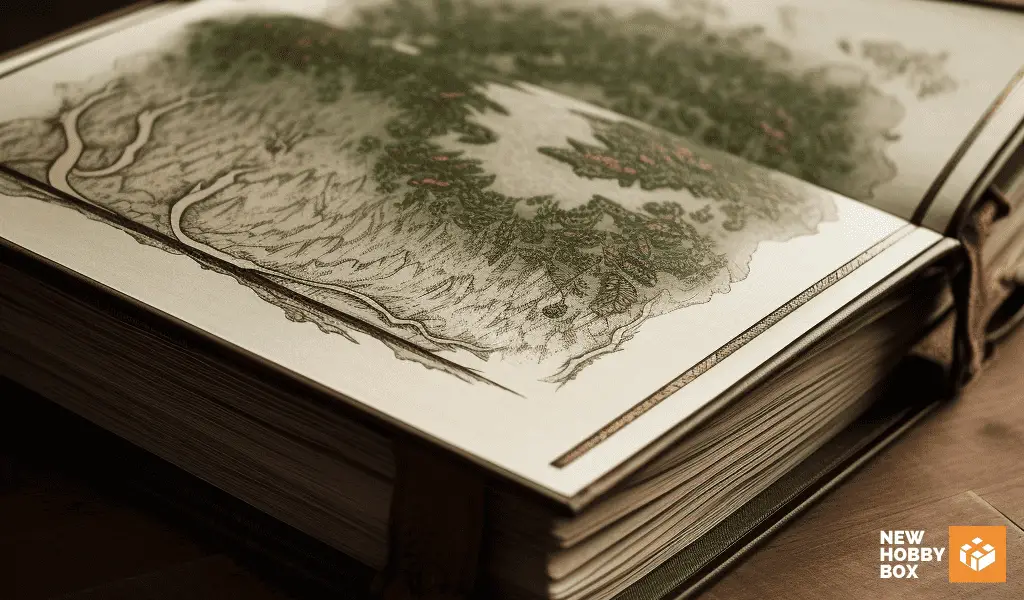
White vs. Natural Colored Paper
White paper, with its clean and crisp appearance, is often the go-to for many types of books.
Its neutrality allows text and images to stand out, making it ideal for readability-focused publications like novels or textbooks. But there’s a tremendous amount of bleaching and chemical treatment to get it this way.
On the other hand, natural colored paper offers a rustic and organic look.
Its warm tones provide unique aesthetic appeal and character, making it suitable for specific genres like poetry books or handmade journals. Additionally, its nostalgic or traditional vibe aligns well with historical or vintage-themed publications.
If you’re making the choice between white or natural-colored paper, your final decision should account for the end user and the book’s intended message.
That’s right – what sort of feeling do you want your end user to have when they pick your book up and flip through the pages?
Although white is versatile and broadly acceptable, natural colors can establish a unique visual identity and enhance certain uses.
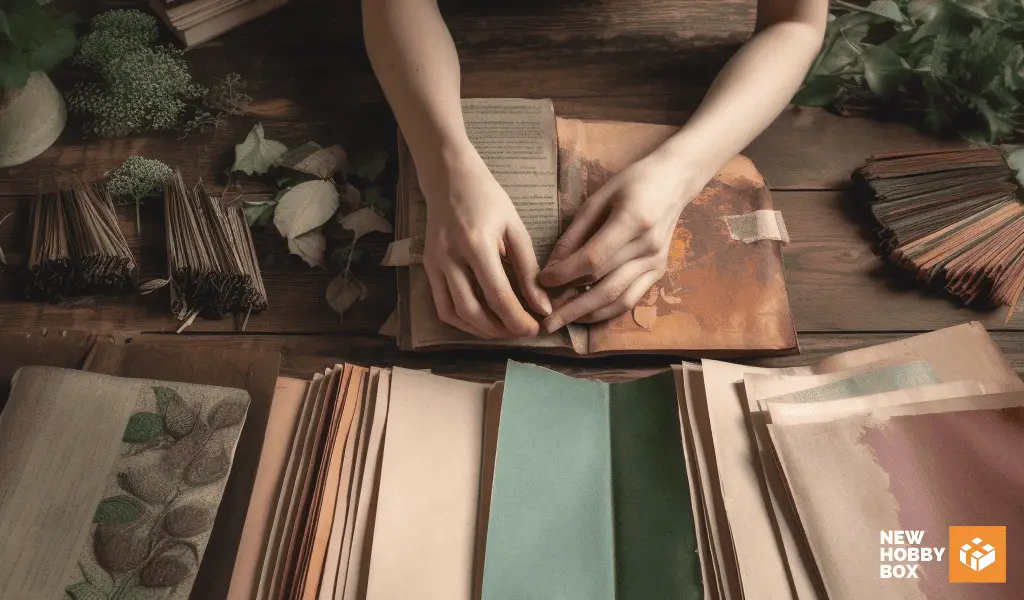
Paper Weight Options
We’ve already touched on paper weight, but as a quick refresher: paper weight refers to its thickness and heaviness. This significantly influences the finished book’s durability, flexibility, and overall quality. Here’s what this means in terms of finished product:
- Lightweight papers are the mainstay of novels and fiction books due to their easy handling and cost-effectiveness in mass-production. If you’re creating a notebook or a journal that you plan to use frequently, you might want to consider a lightweight paper.
- Heavier-weight papers are what you’d find in a coffee table book or those massive books at the hair salon, you know, the ones filled with art and the latest styles. They have a more substantial feel and better support for illustrations and photographs. This is a great option if you plan to do defined sketches or painting in your book.
Paper weight also impacts page opacity.

Heavier papers are more opaque, preventing bleed-through in double-sided printing.
Lighter-weight papers offer easier bending and folding, making them suitable for portable books. In contrast, heavier-weight papers provide increased durability and stiffness, ideal for hardcover or frequently-handled books.
And finally, the choice of paper weight can affect the overall cost of book production and may require consideration based on different binding methods.
For instance, if you bind a book using a Coptic stitch, it can handle extremely thick paper, but if you bind a book using just glue, like you would in the perfect binding technique, then thick paper wouldn’t be feasible.
Who’d have thought paper weight would have such an impact on your book? Arguably, it’s the most important element to get right, once you decide the type of binding you want to do.
That’s because it’s a balance of flexibility, opacity, and durability that impacts the actual use of the book as well as its structural integrity.
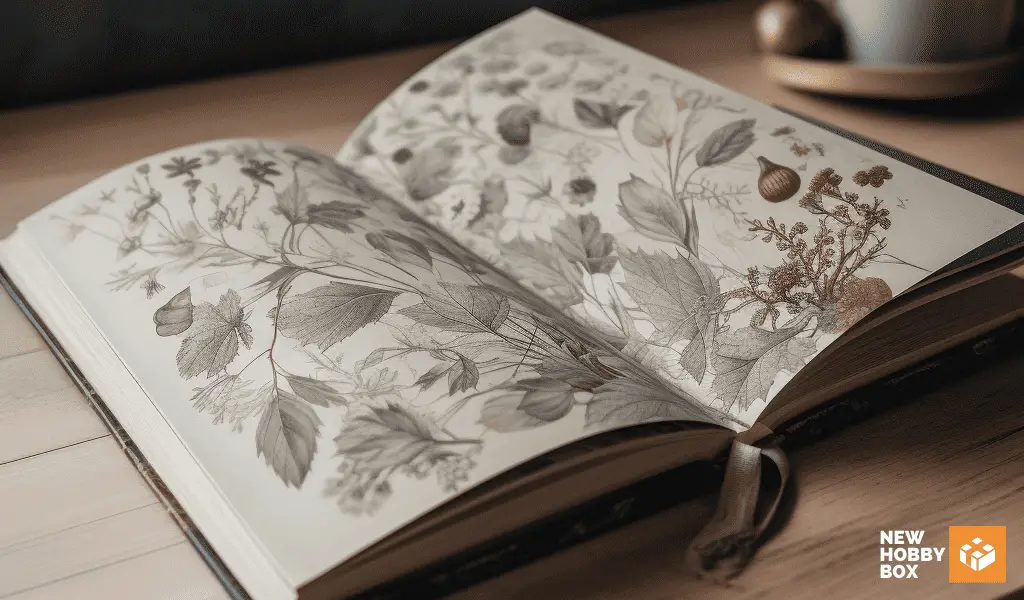
Other Paper Considerations for Bookbinding
Beyond the immediate tactile properties of paper such as weight, texture, and color, there are a couple of other important factors you should consider before you start your book project: Responsible sourcing and acid-free paper.
Responsible Sourcing:
In an age of increased environmental consciousness, the responsible sourcing of paper is more important than ever. We pay close attention to this in every hobby we pick up, and every product we recommend.
Which is why you’ll see hobbies like eco-dyeing in our tutorials, rather than its hazardous alternative.
As we step down from our soapbox, in all seriousness, you should consider the most eco-friendly option for bookbinding and paper-making.
Choosing responsibly sourced paper not only supports ethical industry practices but also contributes to the preservation of our forests.
Paper certified by recognized organizations like the Forest Stewardship Council (FSC) guarantees that it has been sourced from responsibly managed forests or includes recycled materials.
Therefore, opting for responsibly sourced paper allows bookbinders to contribute towards conserving natural resources.
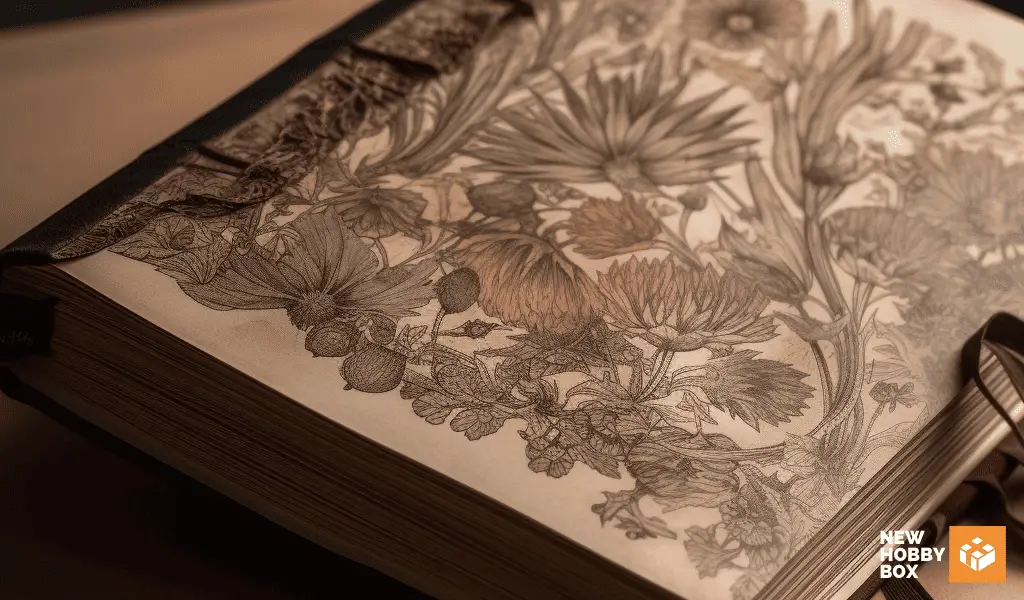
Acid-Free Paper:
There’s two things to note related to acid-free paper: it’s functional impact and its personal importance.
Acidic papers deteriorate over time, leading to discoloration (yellowing) and brittleness. Acid-free paper, however, is manufactured with a neutral or alkaline pH, which prevents such deterioration and ensures the longevity of the printed material. They refer to this as archival quality.
Books printed on acid-free paper can maintain their condition for many years, ensuring that the text and illustrations do not degrade over time. Therefore, using acid-free paper is especially important for books intended to be kept or collected for a long duration, such as academic textbooks, limited edition publications, or heirloom books.
At a personal level, the use of acid-free paper is big decision you’ll need to make.
Aside from the obvious like sustainable and environmentally-friendly practices, or minimizing negative impact on our ecosystems, picking organic paper (acid-free) for your projects can also be a much healthier option.
When you’re binding books and creating paper, you’re constantly exposed to the materials. The last thing you need high exposure too is something that is chocked full of chemicals.
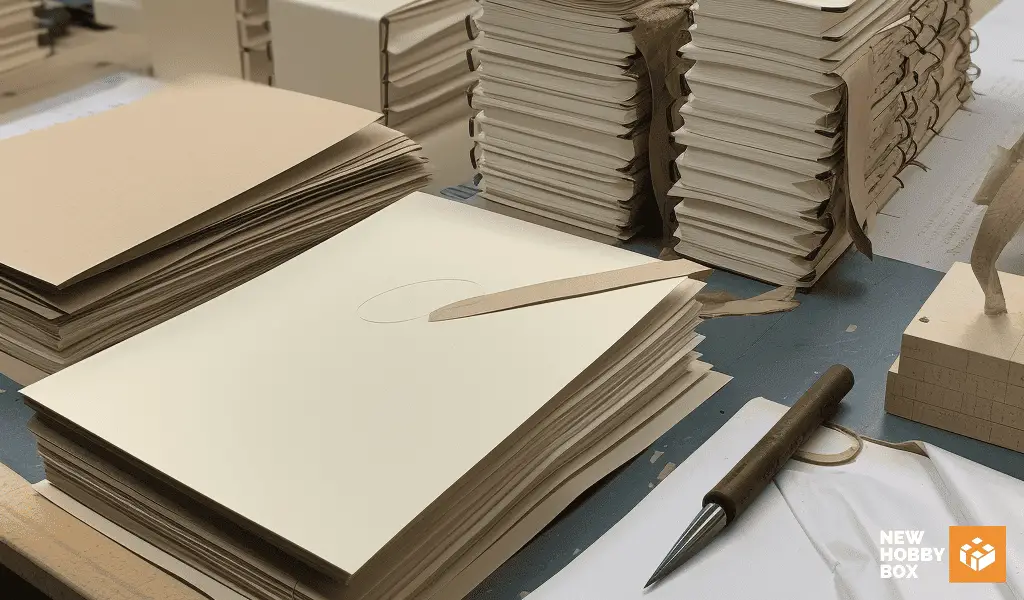
BEST BOOK BINDING TOOLS AND MATERIALS AND WHERE TO GET THEM
By this point in the guide to all things paper for book binding, you should have a solid foundation on the options, and what to look for based on your project.
The only thing left to do now is talk brass tacks about tools and materials you’ll need for bookbinding. That’s of course assuming you’re ready to commit to creating one of the coolest books around – one that you made by hand with the best paper around.
If you can’t tell, we talk bookbinding a lot here at New Hobby Box. And of course, we created a comprehensive hit list of the best tools and materials needed for this hobby. An important note here: we tend to Coptic stitch our books, so the tools and materials cater to that.
There’s certainly crossover if you decide to do a different type of binding method (there are tons of binding methods to consider, after all) but we wanted to make sure you knew this beforehand.
Without further ado, from our detailed list of tools and materials you should get for bookbinding, here are three of the most critical items and where you can find them: paper, glue, and your awl.
Best Paper for Bookbinding – All Things Cotton Handmade Rag Paper
Rag paper, unlike typical wood pulp paper, is made from 100% cotton fibers, offering archival quality and acid-free properties. This recommendation is subjective, as all recommendations are.
But we constantly go back to this specific paper because it’s constantly high-quality, add the rustic vibe and feel we love, and we like to make journals mostly, so the thickness is perfect that use.
It’s highly durable, resistant to fading and yellowing over time, making it ideal for bookbinding. The paper also has a unique visual texture due to its construction from natural fibers, adding a handmade touch to your book.
You can even make this paper yourself – just follow our tutorial if that seems like the right path for you.
But, if you want to simply grab this from a store, don’t go to Amazon. You won’t get the right quality needed for a homemade book. In our experience, the best quality and price for thick, handmade rag paper is Etsy.
When choosing rag paper, look for thickness, smooth texture, vibrant color, and ensure it’s acid-free and made from 100% cotton fibers.
Best Glue for Books – Books by Hand PVA Glue
If you’re binding a book, especially in the Coptic style, you should only choose one type of glue – PVA glue. Just trust us here.
But if trust in an Internet stranger isn’t enough, go read any review of glues to use. We’ve studied this thoroughly (we’ll drop this link again to our discussion on book glue), and put it to the test in real-life many times.
If you want a book that lasts, doesn’t wear down with age and use, and doesn’t become the source of madness and frustration, PVA glue is the right choice.
It’s strong and versatile and maintains its bonding agents for a long time and is ideal for nearly any bookbinding project.
Unlike other glues that can degrade and deteriorate your book, PVA glue is used to adhere the cover and endpaper to the book board – meaning it’s a structural decision. Plus, it dries clear, leaves no residue, and its high tackiness ensures a secure bond between the pages and cover.
Oh, and the PVA glue we use and recommend is Ph Neutral, meaning it’s safe if it gets on your hands and also not damaging to the environment.
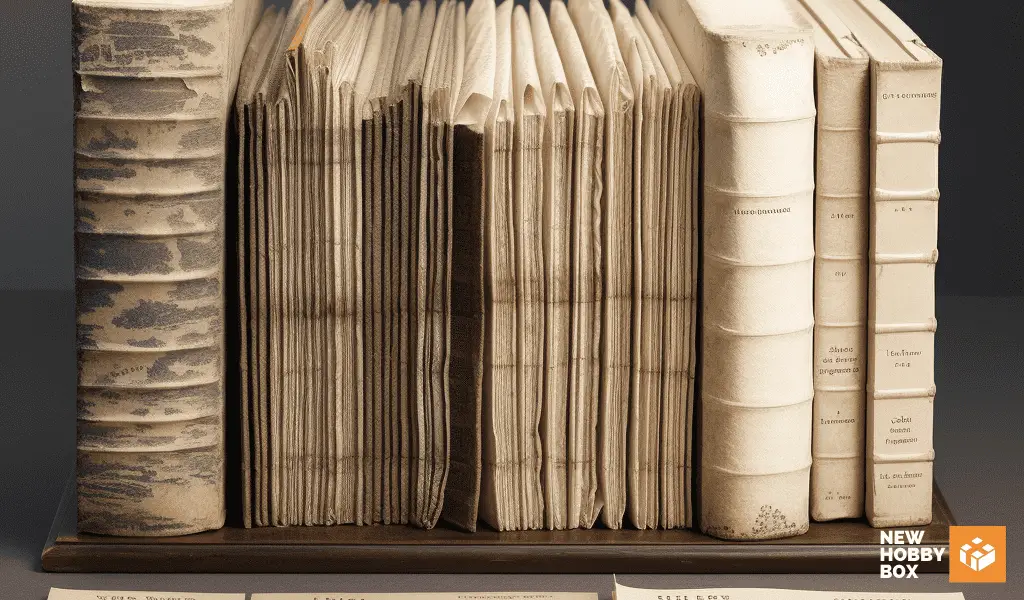
Best Piercing Awl for Making Books – Malco A3 Hand Scratch Awl (3/8″)
Unless you decide to go with an adhesive-only binding method (don’t do that – it lacks creativity) you’re going to most likely need to stitch the spine of your book. In which case, a clean and precise hole is critical.
If you don’t know why that matters, it’s because threading messy hole can be incredibly time-consuming and aesthetically, if you aren’t able to make precise holes, it can be visible in some forms of making a book.
We’ve mentioned the Coptic style a few times already, but it’s the perfect example of this. In Coptic stitching, the entire stitching on the spine is visible.
If the awl is dull, or hard to grip, you’ll be able to see inaccuracies quickly with a Coptic book.
A good awl should have a sharp, thin shape for precise piercing, a smooth texture to avoid snagging, and a durable steel blade that maintains its sharpness. It’s also important to find an awl with a comfortable, non-slip handle for ease of use – the Malco Awl has all of this.
There are many materials and tools to consider, so for the full list, be sure to check out our book-binding buyer’s guide.
But if you went cheap on the rest of the supplies and purchased the three products above, in our experience, you would minimize a lot of the downfalls of going cheap on this hobby.
WRAPPING UP THE PAPER TALE
Let’s put a bow on this paper story. When you’re in the thick of making a book at home, picking the right paper isn’t just important – it’s everything. And while it might seem a bit baffling at first, thanks to the endless amount of options, once you’ve got the hang of it, it’s a cinch.
Just remember the following as you set forth:
- Durability: You’ve got to get a paper that’s tough. It needs to be withstand any wear, tear, or careless coffee spills.
- Weight: Think about how heavy you want your book to be. It’s all about finding that ‘just right’ thickness. Too thin and your book might feel flimsy, too thick and you’ll end up with a book that feels more like a dumbbell.
- Feel: Texture is where you get to play matchmaker, pairing the perfect texture with your book’s personality. Smooth paper looks sharp and easy to read. Rougher texture looks unique and adventurous.
Choosing the right paper for book binding isn’t just about utility – it’s also about bringing out the character in your book.
And once you’ve got that, you’ll have a book that’s not only easy on the eyes but a joy to hold and flip through. Now, go out there and start making some beautiful books!
